Oslo on the cheap
How to see the greatest hits of Oslo in half a day—and at less than half the cost

Edvard Munch's "The Scream" (more accurately, "The Cry") in Oslo's National Gallery of Art.If you’re flying into Norway and are leaving Oslo the very next day (for, say, a cruise to Spitsbergen or the famous "Norway in a Nutshell" journey of other fjord cruises), you’ll spend most of the morning arriving, getting to your downtown hotel from the airport (the high-speed airport train is fantastic), and splashing some water on your face to revive from the overnight flight. You probably won’t get out of the hotel door until 11:30am at the earliest.
So how do you cram the best of Oslo into a single afternoon without spending a fortune? Follow me.
Get the Oslo Pass
First thing you do is you get the 24-hour Visit Oslo Pass (www.visitoslo.com). You can buy it at most hotels, any tourist info office, or the Nobel Peace Center. It’s a NOK 230 ($43) investment, but once you make it, you don’t have to pay to get into any sight or hop and form of public transportation—plus you get a free cruise on the Oslo fjord.
Trust me. Get the card. It will cut your expenses literally in half (or more). Otherwise, visiting just the sights mentioned below—plus the bus and ferry ride—would total NOK 367 ($68)—NOK 392 ($73) on the weekends.
Note that most sights close at 6pm in summer (the Kon-Tiki at 5:30pm).
Get your Scream on at the (free) National Gallery of Art
Actually you don’t need the Oslo Pass to get into the best sight downtown. The National Gallery of Art (www.nasjonalmuseet.no; free) is totally free of charge—and it is where the keep one of Oslo’s two versions of Edvard Munch’s famous The Scream painting (he painted four of them).
Mid-morning snack
On the way to the National Museum, half a block down the street, pop into Bit (at Universitetgata 20) for a late morning snack of a freshly baked cinnamon roll twist (NOK 25/$4.60).
They don’t start serving sandwiches and hot calzone to take away (NOK 60–70/$11–$13) until after noon, but I have a more fun lunch stop for you; keep reading.
(For those of you keeping score, this was the first The Scream that was stolen in 1994 then recovered after three months. Oslo’s other The Scream—kept at the outlying Munch Museum—was stolen in 2004 and not recovered until 2006. They really need better locks on their windows in this town.)
The Scream is just one a passel of Munch works in the museum (the languid Madonna’s also a crowd-pleaser) and there are also some nice Norwegian landscapes and a work or two each from those ever-popular Impressionists and their heirs (Renoir, Rodin, Monet, Degas, Manet, Cézanne, Matisse, Picasso, Van Gogh, and more).
Downtown Oslo
Head down to the harbor. That massive, fortress-like, dark brick building with the boxy, board-shouldered profiled and oddly over-tall towers that looks like it was made from 654 billion Legos? That’s the Rådhus, or city hall (www.radhusets-forvaltningstjeneste.oslo.kommune.no); free, built in 1950.
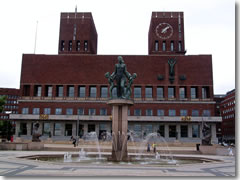
The Rådhus, or City hall, of Oslo.Every year, on December 10, the Nobel Peace Prize is awarded in its cavernous main hall upstairs. But you’re not here for a prize. You’re here for lunch. (If you are here for the Peace Prize, I think you get a free dinner with it.)
Every day at 12:30pm, after the city workers have had a crack at the salad bar, they open to the public the small City Hall cafeteria lofted above the info office just inside the harborside entrance.
You have only one choice for a hot dish, which changes daily (I got pasta under a heaping pile of chicken cream goulash with spinach and sun-dried tomatoes), but it costs only NOK 40 ($7.40). Add a slab of nutty bread, a glass of juice, and a small candy bar and the total damage is only NOK 52 ($9.60)—most restaurants in town charge well over NOK 100 ($19) for a single dish.
Take the Boat to Bygdøy for seafaring history
If you have time before the ferry...
That pale yellow building at the west end of the harbor plaza is the Nobel Peace Center (www.nobelpeacecenter.org; NOK 80/$15), worth popping into if you have 20–30 minutes to spare.After lunch, head out the harborside exit of the Rådhus, stop at the tourist info office at Fridtjof Nansens plass 5 to get an Oslo Pass (if you don't already have one).
Then scurry through the plaza and head down pier 3. Here jump on the #91 public ferry (NOK36, if you don't have the Oslo Pass) to the Bygdøy peninsula to spend some time immersed in Norway's nautical history (not literally immersed; the water's a wee bit nippy this far north).
The Viking Ship Museum
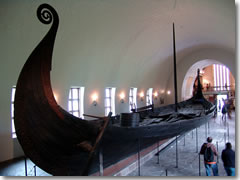
A Viking ship in Oslo's Viking Ship Museum.On Bygdøy you can relive the glory years of the Vikings (those would be the centuries just before and after AD 1000) at the Viking Ship Museum (www.khm.uio.no/vikingskipshuset; NOK 60/$11), where Norway keeps the best of its ancient Viking ships—three of them, each some 1,000 to 1,200 years old, stunningly gorgeous in their curvaceous, streamlined simplicity, and excavated from the wonderfully preserving clay under Norway's waters.
The accompanying accoutrements and informative plaques help bring back to life the good ol' days of sacking and pillaging, horned helmets and dragon-prowed longboats, mead halls and mythic heroes, when the local economy was based on plunder and good Christians all along the coastlines of Northern Europe and the British Isles actually ended their prayers not with "...and deliver us from evil, Amen," but rather "...and deliver us form the Vikings, amen!"
Oh, and when they weren't plundering the coastlines of Northern Europe, in their spare time Viking seafarers were busy founding the great cities of Ireland (Dublin, Cork), settling colonies on Iceland and Greenland, and discovering America (well, OK, Canada at least) several centuries before Columbus got hopelessly lost and blundered into the Caribbean.
The Vikings didn't get the final say in Norway's seafaring history.
The Polar Ship Fram Museum
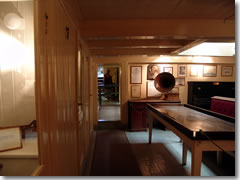
Below decks on the famed 19th-century Polar Ship Fram. Bygdøy also hosts a pavilion museum (fram.museum.no; NOK 60/$11) built around the dry docked Polar Ship Fram, a gorgeous wooden 1890s behemoth of a ship that famously sailed clear across the Arctic and later became the ship that carried the great explorer Amundsen to Antarctica and from which, in 1911, he launched the first successful expedition to reach the South Pole.
Out in front of the museum is dry-moored a much smaller ship, the Gjøa, which was first boat to sail the entire Inside Passage.
The Kon Tiki Museum
Just across the street from this is another museum (www.kon-tiki.no; NOK 60/$11) preserves the Kon-Tiki, a balsa-log raft built by Thor Heyerdahl in 1947. He sailed it 4,300 miles from Peru to Polynesia to prove that, at least technologically speaking, there was a chance that the South Pacific might have been populated by South Americans.

The balsa wood raft Kon-Tiki, which Thor Heyerdahl and his multi-national crew sailed from Peru to Polynesia in 1947.Chuffed with his success (of his sea craft, if not his harebrained population colonization theories), in 1970 Heyerdahl built the Ra II raft out of papyrus and merrily proceeded to sail it across the Atlantic.
If nothing else, it's all pretty impressive stuff from a boat-building point of view (especially to someone like me who once crafted a, er, "boat" out of cardboard, sticks, sheet plastic, and duct tape and managed to paddle it about the Chesapeake Bay for, oh, about 300 feet before it got swamped and disintegrated.)
Norwegian Maritime Museum
If you're not all sailed out, pop into the Norwegian Maritime Museum as well (norsk-sjofartsmuseum.no; NOK 40/$7.40), but be sure to leave time for the Norwegian Folk Museum, which recreates all of Norway in a single compressed area, a giant open-air museum made up of 140 traditional buildings (many of them centuries old, and all filled with appropriate exhibits) hauled in from all across the country and reassembled here.
Norwegian Folk Museum
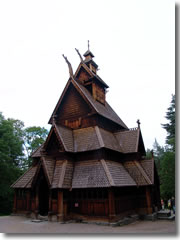
A wooden stave church, built around AD 1200, in Oslo's Folksmuseum park.Landlubbers will be glad to know that also on Bygdøy there's the Norwegian Folk Museum (www.norskfolkemuseum.no; NOK 75/$14 Mon–Fri, NOK 100/$19 Sat–Sun), sort of a 3D map of Norway in miniature packed with 140 traditional buildings, from magnificent wooden stave churches rising like Viking pagodas, to simply, low, turf-roofed peasant houses.
Many of these structures are centuries old, and all filled with era-appropriate exhibits and inhabited by costumed Norwegians who are passionate about teaching history by example.
These buildings are not replicas. Each was disassembled at their original sites, hauled in from all across the country, and painstakingly reassembled here.
You can hike back to the harbor to take the public ferry back, or just cross the street in front of the Folk Museum and hop the no. 30 bus back to downtown Oslo.
Congratulations: you just saw the greatest hits of Oslo in half a day—and at less than half the price most people would have paid.
Now go do the famous Norway in a Nutshell fjord extravaganza, and you'll have done the best of the country in two days!
Slideshow
Related Articles |
|
This article was by Reid Bramblett and last updated in August 2011.
All information was accurate at the time.
Copyright © 1998–2013 by Reid Bramblett. Author: Reid Bramblett.
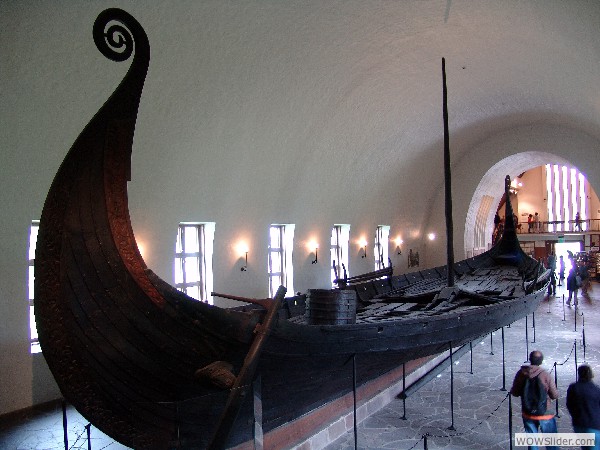
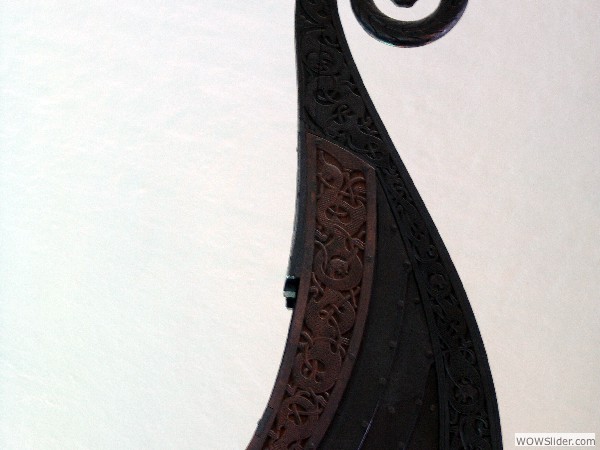
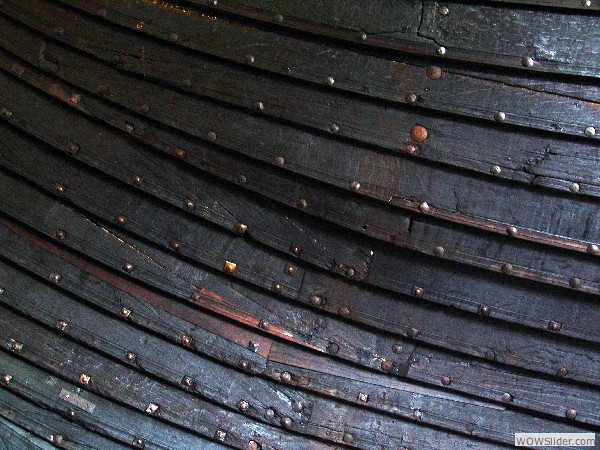
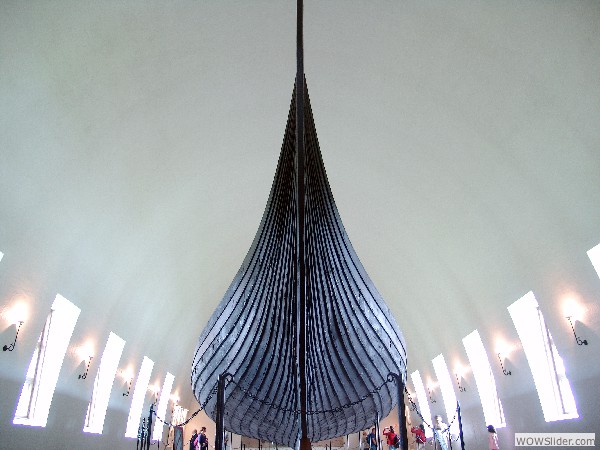
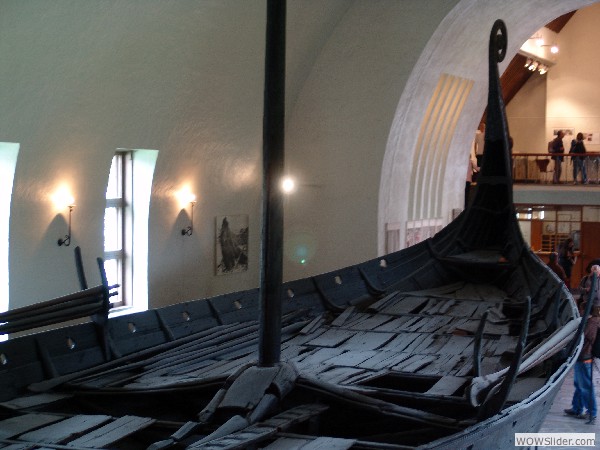
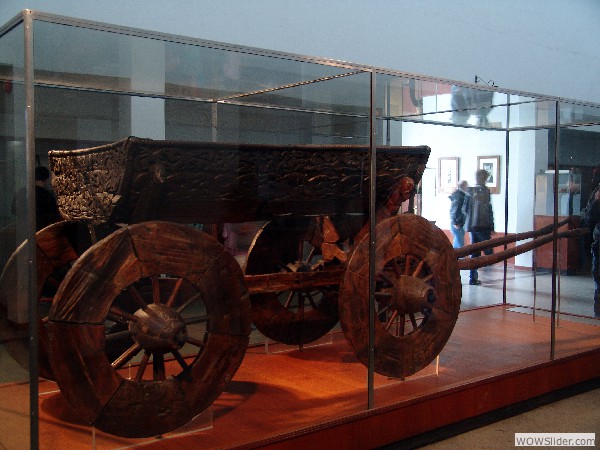
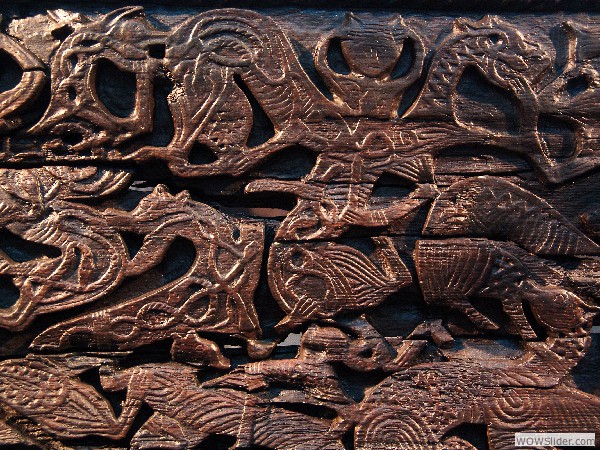
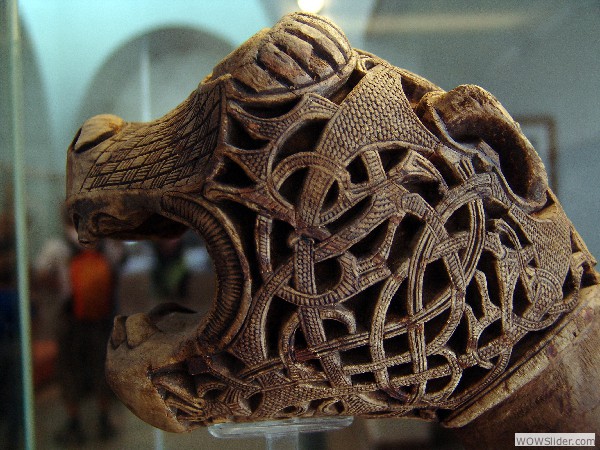
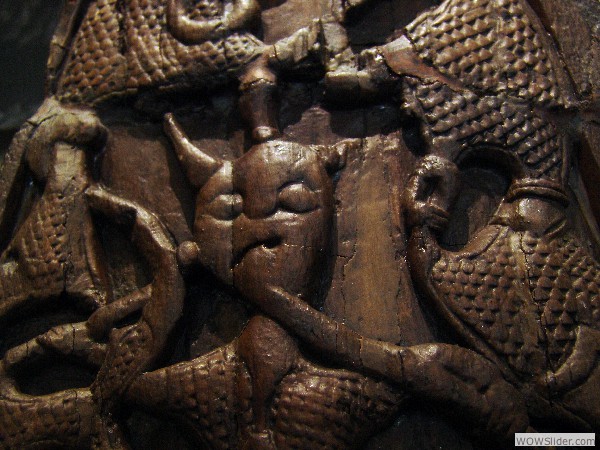
 1
1 2
2 3
3 4
4 5
5 6
6 7
7 8
8 9
9